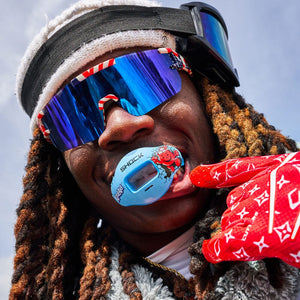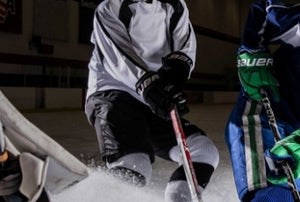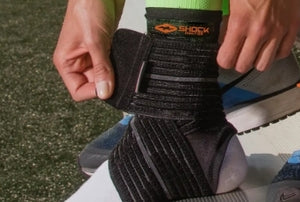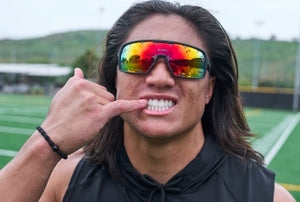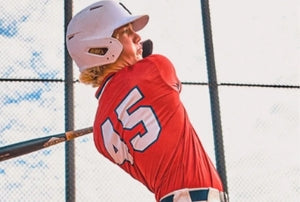Whether you're playing an exhibition game with little significance or you're playing game 7 of the championship finals, you still have to sink your free throws! They don't call it the "charity stripe" for nothing. Those are practically free points! Take advantage of them.
Consider the potential to help your team out by sinking the free throws successfully. If you're a great shooter from outside the arc and you draw a foul while draining a three-pointer, you now get to go to the line for a chance to complete a 4-point play! Even if you miss the shot at the 3-point line, you will get 3 free throws for drawing the foul during a missed attempt.
Don't be that guy who throws the game for the whole team-opposing teams exploit bad free throw shooters! Let's look back in the not-so-distant past when Shaquille O'Neal was still playing professional basketball. We all knew he was a solid player and very dominant as a center; he could rebound the ball and score on just about anybody. Guys who had to play against Shaq knew that they would be going home without any teeth if they didn't use mouthguards.
With that being said, let's not forget that "Hack-A-Shaq" became a thing. For those of us who weren't watching during the Shaq era, "Hack-A-Shaq" was a common strategy by the opposing team to constantly foul Shaq during the last minute or so of the game to prevent the team from scoring, due to his low scoring ability at the free throw line. Just about everyone knew that he was a poor free throw shooter and opposing teams would exploit that to put him on the line and keep his team from scoring. Shooting at about 50%, Shaq missed roughly 5,317 free throws throughout his career. The current professional free throw shooting average is about 75%.
Assuming Shaq upgraded to an "average" shooter, he would've put up 2,504 more career points!Since you're reading this, chances are that you already realize the significance of having a high free throw percentage, which means you are on the right track. Let's get right to it and get that free throw form down.
Visualization
Just before attempting your free throw, you have to clear your mind. Leave all the drama behind and focus on the game. Try and block out any distractions on or near the court also, including the fans, mascots, other players taunting, etc. You should be focused on the task at hand only-which is to make the shot! One little trick that helps players get into a positive mindset and focus on the game solely is to visualize themselves sinking the shot.
Sports psychologists have been examining the positive effects of visualization for years. Dr. Michael Gervais is a well-known sports psychologist who has worked with athletes all over the world. Most notably, he's worked with the Seattle Seahawks during their Super Bowl runs. He teaches the idea that visualization (or imagery, as he prefers to put it) can lead to enhanced performance."The objective is to create such a lifelike experience that your body believes that it could be real," he said. In the same way that practicing meditation leads to enhanced focus, practicing imagery leads to more realistic experiences, which may allow your mind to train for the real thing. Next time you're at the line, try visualizing yourself sinking every shot.
Find the Nail
Did you know that in the dead center of every free throw line on a basketball court you will find a nail? Yep, that nail serves as a center mark. When you're setting up your stance, find the nail and set your lead foot right by it. If you're a right-handed shooter (the vast majority), you will want to place your right foot on it and vice versa. This helps you align your shooting hand with the center of the rim. Taking a perfectly-centered shot should be much easier to make than an angled one.
Your Own Ritual
With your stance established and perfectly centered, now you can focus on your ritual. Professional ballplayers all have their own ritual that allows them to clear their head and perform the free throw successfully. Some players will only dribble once, or possibly twice, and some players like Jason Kidd even blow a kiss to his wife and children. Whatever the case may be, find what works for you and stick to it.
Bend Your Knees
When you shoot from a position of strength, you will have more control on the ball. You will generate more power from your legs than you would with your arms alone, so it's best to bend your knees before you start your shot. Make sure to find the center spot on the line and align your lead foot with it. Now, with a staggered stance, chamber the ball just below your waist as you bend your knees. Begin the shooting motion by extending your knees and channel that energy upwards and into the basketball. You should shift all of your weight onto your toes at the point of release where you finish the movement.
While extending and transferring that power from your legs to your arms, raise your elbow and point it towards the basket with your hand retracted back. Your arm should create an "L" shape.
The Release
The release is literally the finishing touch on the shot and can make or break the shot, so you want to work on this part very carefully. You want to make sure that you are gripping the basketball with your fingers and not your palm. If you grip the ball with your palm, you will not have control of the basketball. If you shoot with your right hand, your left hand should be used sparingly as a guide. Allow your shooting hand to be the dominant force in your free throw, given that you are more dexterous with it.
According to Michael Jordan, arguably the greatest player that ever hit the basketball courts, your thumb, index finger and your middle finger should make the most contact with the ball and be the last fingers to touch the ball during the release. Your release should force the ball to rotate on a path that would bring the ball right back to you, meaning that the ball is launched directly forward, avoiding any angling "putting English on it."
There are two reasons why having the correct backspin is so important. First, if you happen to miss the shot it can bounce right back to you. Secondly, if you don't put any awkward angles on the ball and you're lined up perfectly down the center of your target, you will have a higher chance of getting the ball to go in if it hits the rim. A shot that is released at an awkward angle can cause the ball to roll around the rim and ultimately roll off and miss the shot.
The Steve Nash Trick
Okay, it's not really a trick, but that got your attention, right? Steve Nash is quite possibly the best free throw shooter of all time in professional basketball, with a career free throw average of 90%. Generally, Steve will sink about 90% of his first attempts and 91% of his second attempts. The most curious point to note about this statistic is that most other players in the professional league will shoot about 5% lower on their first attempt and improve on their second attempt. So, Steve is arguably 4% more successful on his first attempt, with a very slight deviation on his second attempt. What makes the difference? Well, years of practice helps, but Steve also has his own routine for warming up at the free throw line. Before the referee hands Steve the ball, he will actually rehearse his free throw motion a couple of times before the actual shot. This allows Steve to recruit his fine-motor skills and visualize his shot before actually performing it.
Develop Upper Body Strength
So, the sport of basketball is not necessarily a powerlifting contest, but you want to have decent strength in your upper body for a better free throw. Given that you cannot jump and elevate on a free throw, a bit more strength is required.
The stronger you are, the more control you will have over the ball due to the fact that you will not have to exert yourself as much. A stronger, fitter individual will be able to do more work and fatigue less. Fatigue is harmful in sports and in general, due to the fact that your form degrades with fatigue. A free throw is a precise movement and any deviation from your regular shot can result in a miss. Having more strength in your upper body will prevent any deviations in your shooting form due to fatigue.
If you're not currently hitting the weight room, try focusing on the pressing muscles a bit with resistance exercise. The triceps and shoulders play a huge role in your shooting ability. These muscles can be targeted with a bench press, dips, push-ups and military presses, to name a few.
Another great way to combat fatigue and keep your free throw motion on the right trajectory is to use compression gear while playing basketball. Recovery compression gear actually helps the wearer by increasing circulation and helping to remove lactic acid, which reduces fatigue.
Practice Makes Perfect
Developing your free throw ability is all about repetition. After you take all of the tips mentioned above and digest them, the next step is to put them into action. Use each tip and find out what works best for you to create your own style. Once you have that rhythm down, then you continue to practice it and develop muscle memory.
They say hard work beats talent when talent doesn't work hard, but don't forget that there are people with talent that work hard, too! Make some time to improve your free throws and drill them as often as possible. Creating a practice schedule would be a good idea if you're having issues getting practice time in.
Well, that's about it! If you take these tips and put them to good use, your free throws can end up looking a lot more like Steve Nash's than Shaq's-and that's a very good thing!
